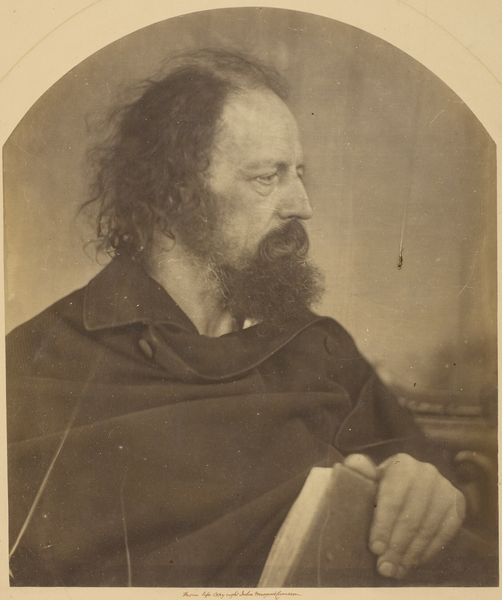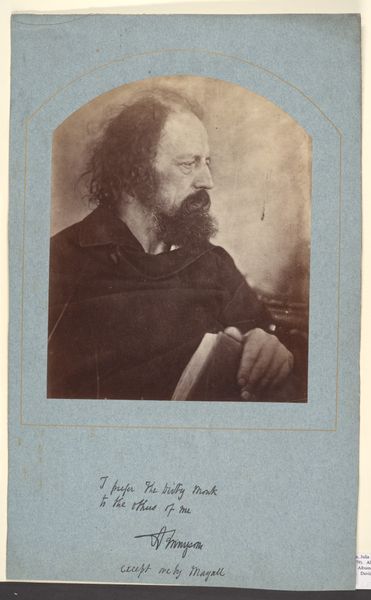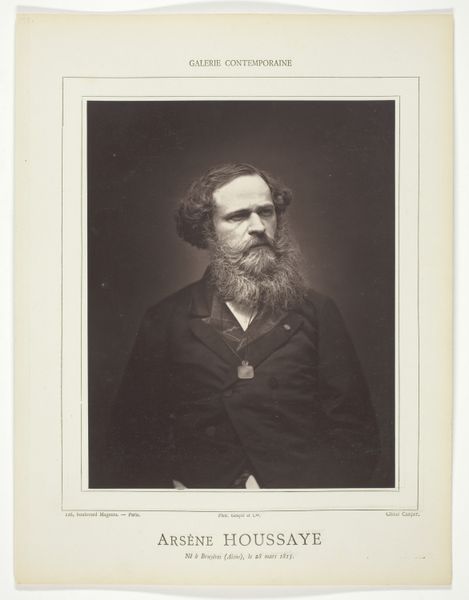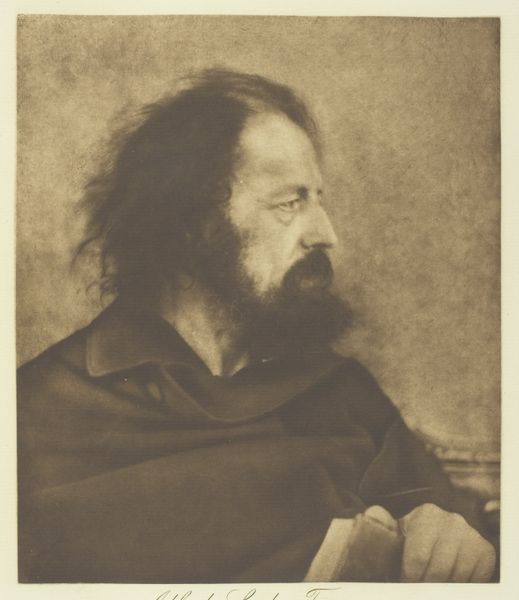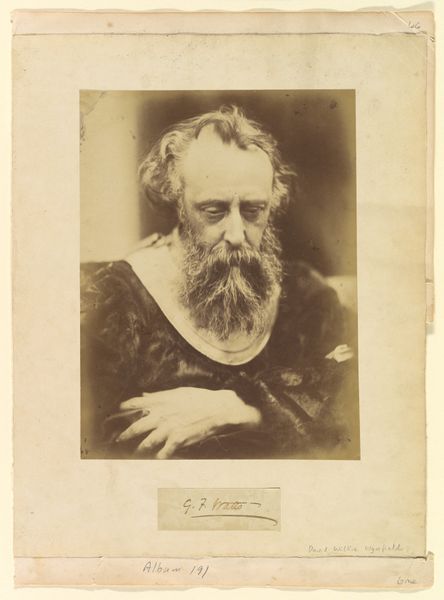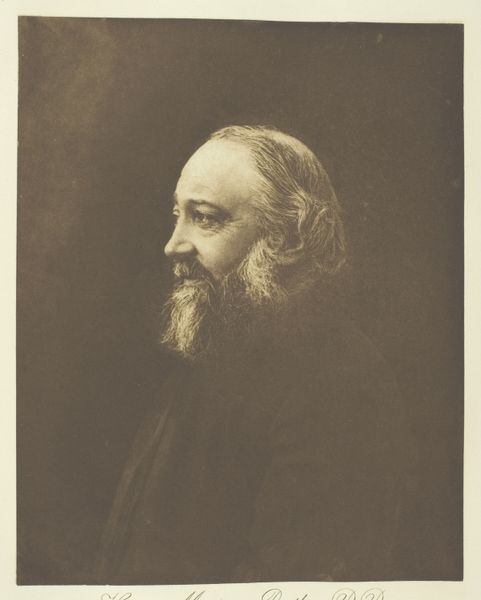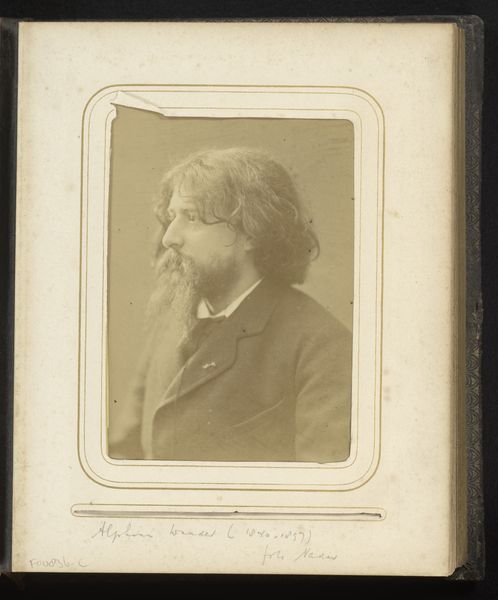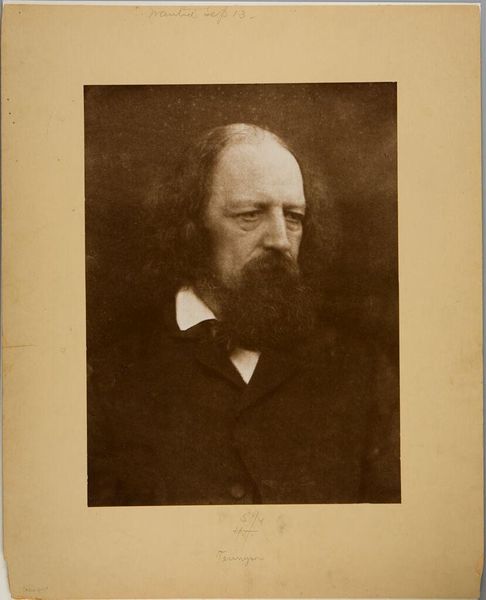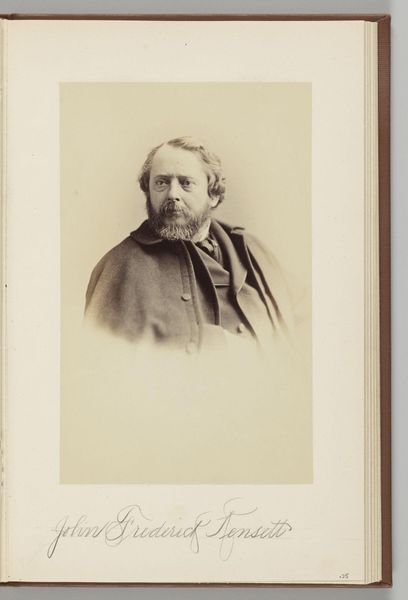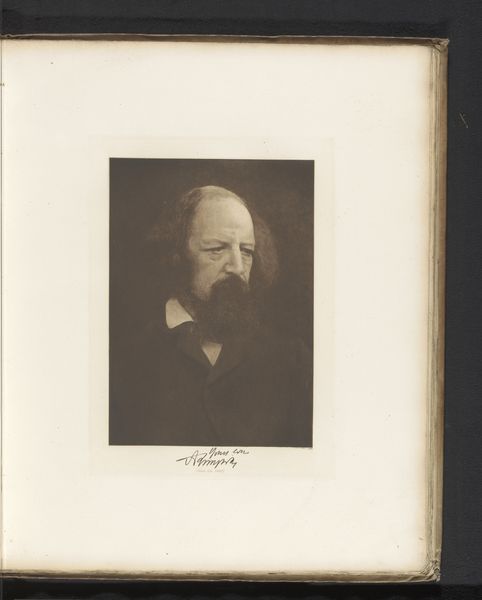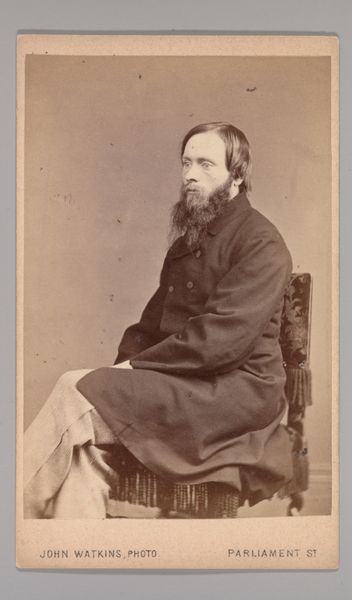
Copyright: Public Domain
This is a photograph of Alfred, Lord Tennyson, made by Julia Margaret Cameron, who was active in the early days of photography. In Cameron’s time, photography was a chemical process, a craft, and a far remove from the instantaneous images we take today. Each print required long exposures, meticulous darkroom technique, and a great deal of patience from the sitter. Cameron used the wet collodion process, in which glass plates were coated, exposed, and developed while still wet. This process often resulted in imperfections that Cameron embraced, like soft focus and visible brushstrokes, which imbued her portraits with an ethereal, dreamlike quality. Tennyson, one of the most celebrated poets of the Victorian era, appears here in a manner that reflects his artistic status, even as it was enabled by the labour of Cameron herself. By understanding the means of production of early photographs, we can better appreciate both their historical significance and their aesthetic qualities, and challenge the traditional hierarchy between art and craft.
Comments
No comments
Be the first to comment and join the conversation on the ultimate creative platform.
